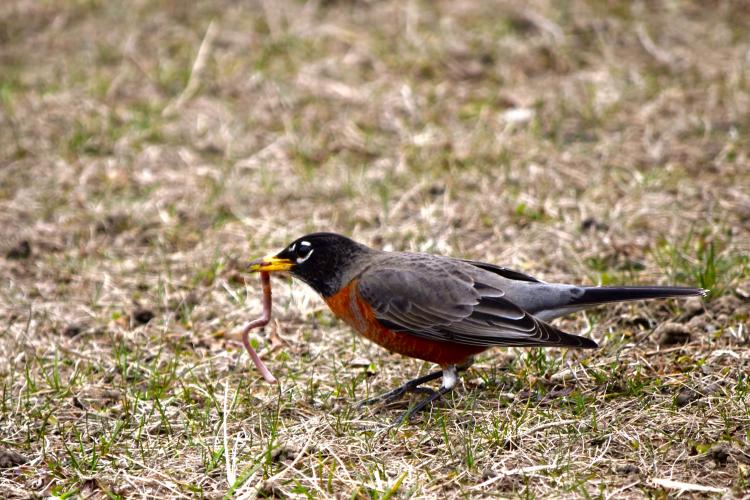March: Worm Moon
The Full Moon in March is the Worm Moon. It is also called Lenten Moon, Crow Moon, Crust Moon, Chaste Moon, Sugar Moon, and Sap Moon. It's the last Full Moon before the vernal equinox.

A spring robin pulling out a worm.
©iStockphoto.com/Wendy Cain
In ancient times, it was common to track the changing seasons by following the lunar month rather than the solar year, which the 12 months in our modern calendar are based on.
For millennia, people across Europe, as well as Native American tribes, named the months after features they associated with the Northern Hemisphere seasons, and many of these names are very similar or identical.
Full Moon Names
Today, we use many of these ancient month names as Full Moon names. A common explanation is that Colonial Americans adopted many of the Native American names and incorporated them into the modern calendar.
However, it seems that it is a combination of Native American, Anglo-Saxon, and Germanic month names which gave birth to the names commonly used for the Full Moon today.
Some years have 13 Full Moons, which makes one of them a Blue Moon, as it doesn't quite fit in with the traditional Full Moon naming system. However, this is not the only definition of a Blue Moon.
Last Full Moon of Winter
The Worm Moon is in March, and it is the last Full Moon before the equinox around March 20. The vernal equinox marks the end of winter, and the start of spring and the Full Moon is named after the earthworms that emerge at this time of year.
There are more around 6,000 earthworm species worldwide. In the US and Canada, there are more than 180 species, and 60 of these are invasive, brought over from Europe, including the night crawler.
The glaciers that spanned across Canada into the northern parts of the US during the last ice age wiped out earthworms. All types of earthworms found in these areas today have been imported, either intentionally by settlers, or accidentally along with plants or in soil used as ballast in ships. In fact, the native forests in these areas do not benefit from earthworms as they eat up the deep layer of slowly decomposing leaves and organic matter covering the soil, known as duff, which is crucial to young trees.
Spring and New Beginnings
The spring equinox has had great cultural significance through the times, and many cultures still celebrate new beginnings, rebirth, purity, cleaning, and chaste or lean living around this time. Another name for the March Full Moon is Lenten Moon. Lenten is derived from Germanic languages and means spring, and has also given name to the Christian Lent period before the Easter celebrations.
Another name is Crust Moon, after the crust which forms on top of snow as it melts and refreezes. Chaste Moon refers to the purity of the spring season, while Crow Moon signifies that crows appear at the end of winter. Sap Moon or Sugar Moon mark the time for harvesting maple syrup from maple tree saps.



No comments:
Post a Comment